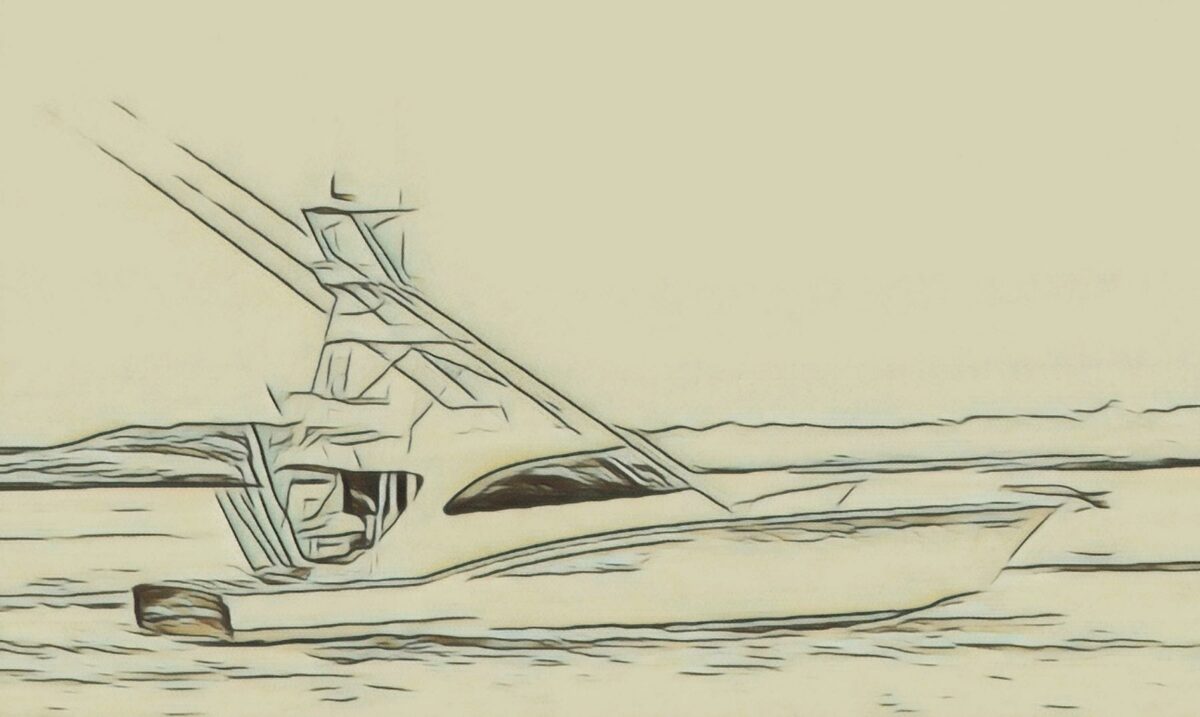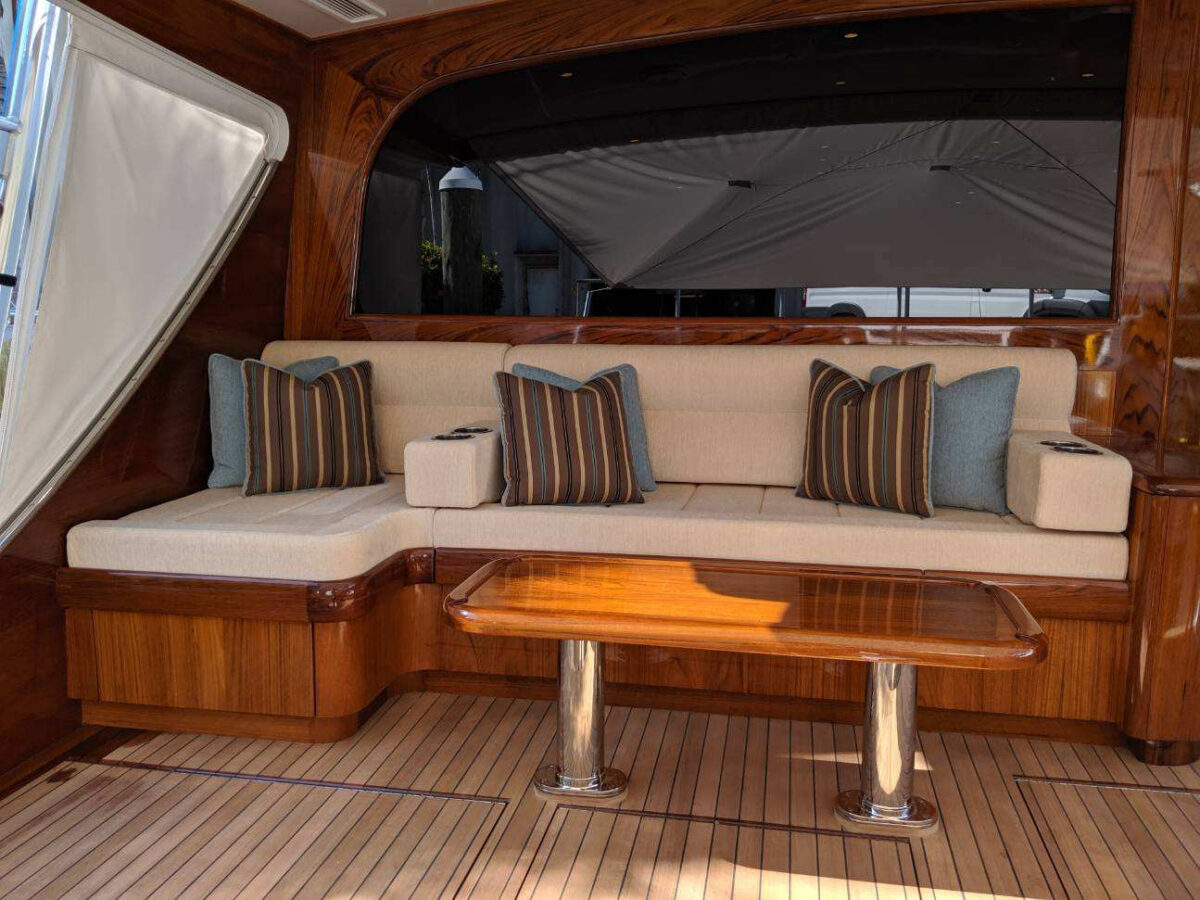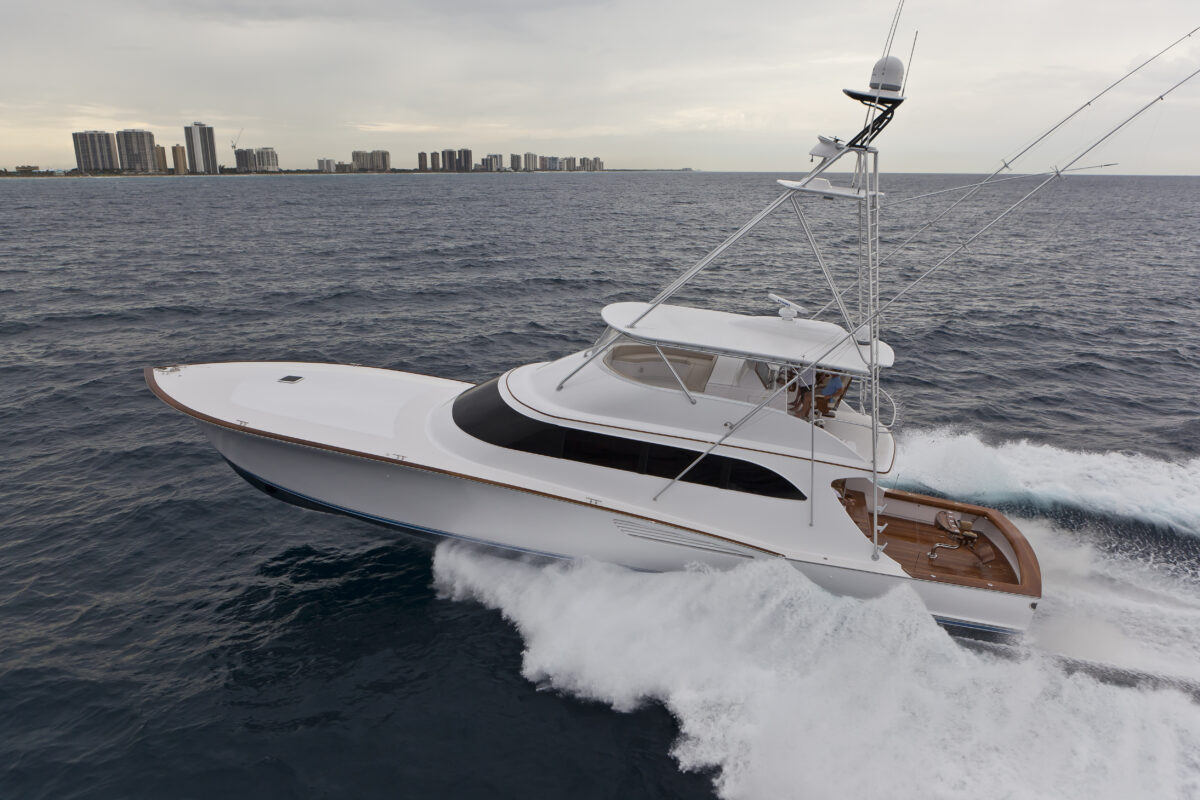Our industry is filled with a beautiful, wide-ranging swath of style. How a boat looks is critical. She can be the best-running, sweetest-handling and fastest hull in the water. But the recreational boating industry has proven that if she not aesthetically pleasing, nobody is interested. To the untrained eye, or someone not too interested in fishing vessels, sportfishing yachts can look alike. Ive heard it many times””theyre all the same!” Even some yacht designers have said this to me. I beg to differ. Patsy was notably the first sportfishing cruiser to be built with diesel power, circa 1936. And yes, there are features she had that are still seen on new sportfish designs today. This tells us that so many of the design features of sportfishing yachts are based on practicality. The hull bottom must run well in all kinds of seas, but layouts need to provide a stable, usable fishing platform. For the sake of this discussion, well focus on the standard open flybridge arrangement. The genesis of today sportfishing vessels shares many use-driven needs. The cockpit must be open, to allow for action, people and rods swinging. The bridge overhang, though, provides shading for those taking a break from the bite. But the cockpit must also be low to the water to provide a usable interface between angler and fish. This is one aspect of a fishing boat, which sets it apart. Too low, the cockpit cant drain, too high, access to the water surface is strained. Along with this is a freeboard, which allows the user to reach out over the water. These both combine to result in a relatively low sheer line aft. But these craft see all kinds of snotty conditions, so the sheer must rise going forward. In the hull sides, a classic shape aft is tumblehome, which pulls the sheer inboard without narrowing the hull. This can allow the rod tip to extend over the sides without compromising hull and cockpit beam. Going forward, hull sides develop flare. While design features of the hull bottom help to control unwanted wetness, flare helps direct water outward when really coming down hard into seas. On early designs, helms normally would be lower, on main deck in the deckhouse. Clearly, the flybridge layout provides superior visibility. So builders started adding a helm on top of the house. From here, not only is forward visibility better, but the captain can, on a proper design, see the cockpit clearly; a critical ability that allows the boat to work in concert with the fishing. Another benefit from high up is the ability to see the water surface, and what swimming below the water surface, more clearly. Obviously, our sportfishing boats have evolved, becoming larger, more powerful and filled with more content. But we have established that nearly all flybridge-arranged sportfishing vessels have most of these features: a low open cockpit, a deckhouse, a relatively high bow and an upper helm station. I guess they all do look alike. But this is not true. Differences abound in design and styling from builder to builder, each with its own look and character. So let quickly examine what helps to define a particular look. A high-performance hull is basically three main lines: the keel, chine and sheer. When in the water, the sheerline is the most important definer of look. Every builder has their own, and they all drive the visual character of the boat. Some are continuous, and some have a break. Even the break can look very different from one to the next, either strong, or more subtle. The stem is the continuation of the keel above the water and also goes a long way to define the look of the boat. Some are straight, some have slight curvature and some exhibit an extreme clipper bow. Above the sheer, the deck and bridge have their own shapes and defining looks. Over the years, most decks have become more curvy, more modern, with softer edges. The rake of the deckhouse and bridge is important in defining the look. At the aft end of the house, the wingwall shape is also a telltale of what boat youre looking at. House windows are also styled, but must still provide a practical view. They must be the proper height and size relative to the salon deck while also being shaped in a way that not only looks good, but also is consistent with other boats in the line. Another feature, both where it is and its shape, are air vents. While some builders take air in through openings under the gunwales, most will have the vents on the hull sides near the sheerline. These vents can look vastly different but must be big enough to feed ample air to the engines and generators. Other less obvious features (but details that are useful and can vary greatly in look) include transom camber, toe rail, drip rails, hulls side guards, bow rails and many others. With the advent of larger and larger boats, say in lengths of 80 feet and higher, there are challenges with meeting some of the practical features while maintaining an aesthetically pleasing look. This is mostly seen with the sheer and cockpit height on larger boats. While boats get bigger and bigger, people dont grow as much, and so the low sheer aft can look a bit odd on these larger hulls. Smaller boats can start looking too tall as the relative height of the house and bridge must still be enough to be usable. So yes, many sportfishing designs share similar features, most of which have developed over the years starting from basic needs for the vessel to be fishable. But if you take some time to look, there are varied details from boat to boat, helping to identify the builder and sometimes even the designer. And while we will continue to see the major features critical for a fishing vessel, most designs continue to be tweaked, with nuance and elegance, creating some of the most beautiful craft on the water.













